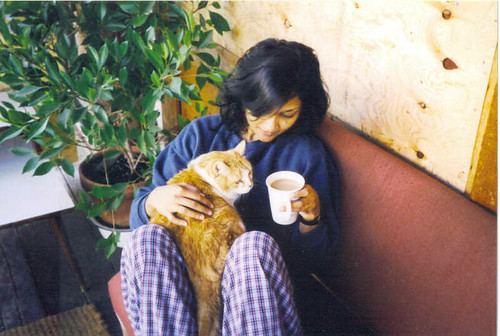Rising Strong
Rising Strong
by Dr. Brené Brown

The book cover states, “The physics of vulnerability is simple: if we are brave enough often enough, we will fall. Being brave and falling helps us grow and changes us for the better.”
Social scientist and best-selling author Dr. Brené Brown has spent several years studying vulnerability, courage, authenticity, and shame. While her previous two books are a “call to arms” to Wholehearted Living, this third book is all about acknowledging the desperation, the shame, and the vulnerability that comes along with failure, and rising up to own our story. She writes, “Here’s how I see the progression of my work: The Gifts of Imperfection—Be you. Daring Greatly—Be all in. Rising Strong—Fall. Get up. Try again.”
In an age where raw data has sought to trump the richness of human experience, where quantitative reigns over qualitative studies, Dr. Brown bridges this dichotomy by integrating data and stories -- infusing data with life and supporting stories with data -- in an effort to “find knowledge and truth in a full range of sources.”
When Dr. Brown talks about failure, it is not just in some large-scale professional endeavour, but also the personal heartbreaks and catastrophes in our lives. She addresses the complex nature of failure, reminding us that we tend to "gold-plate" failure and grit, sugar-coating the process and the pain involved in falling and in deciding to rise again. The book is not about the tired cliché of failure being the stepping stone to success.
Rising Strong from our failures involves a three-step process:
The Reckoning: Walking into our story and recognizing that a button has been pushed and that we are about to explode with negative or undesirable emotion
The Rumble: Owning our story by being honest about what we tell ourselves, by admitting our deeper emotions of shame, guilt, blame, and being willing to revisit and challenge these self-narratives to arrive at the truth of who we are and how we engage with others
The Revolution: Writing a new ending and changing how we engage with the world on a permanent basis.
Of these three steps, the Rumble is the messiest: the place of the greatest struggle, and, a non-negotiable part of the process. It’s about becoming aware of the story we're telling ourselves about our hurt, anger, frustration, or pain. In an effort to come out smelling of roses, we tend to glorify our recovery and the redemptive ending while casting off the emotional darkness that engulfs us when we are down, face-in-the-dirt, struggling.
The book suggests that we write down our raw emotions and feelings at this stage of rumbling -- what is called the SFD (“shitty first draft”, per the author) -- without filtering the experience or worrying about how our story makes us look. Then we examine our self-defeating assumptions by asking:
What do I know objectively?
What more do I need to learn and understand about the other people in the story?
What more do I need to learn and understand about myself?
Now we can look for the delta – or space -- between the story we make up and a more objective truth.
“Vulnerability is not winning or losing; it’s having the courage to show up and be seen when we have no control over the outcome. Vulnerability is not weakness; it’s our greatest measure of courage."
As with the previous two books, Rising Strong is rich with anecdotes from Dr. Brown’s own life. Early in the book, she shares a story about a tough moment that surprised her while swimming across a lake with her husband during a family vacation. Her self-doubt, emotional reaction, anger, and pain will resonate well with readers with similar experience. Instead of painting herself into perfection, Dr. Brown tears apart that experience to seek the truth about her story and learn to own it, and thereby engage from a place of understanding and compassion.
“We can choose courage or we can choose comfort, but we can’t have both. Not at the same time.”
Our thoughts, actions, and feelings are like a three-legged stool, each equally important to make a positive change in our lives. Positive thoughts combined with negative feelings will not lead to positive actions. Off-loading, or bouncing, or numbing our hurt, or even stockpiling or bottling them up, or simply denying them, is not the way to deal with our deep dark pain.
Borrowing from Newton’s Third Law of Motion, Dr. Brown proposes that: For every emotion we feel, there is a definite response elicited in us. When angry, we can mindlessly lash out or we can be aware of what we’re really feeling and adjust how we respond. We learn that to be vulnerable and resilient is the best way to engage with the world so as not to be paralyzed by fear of failure or hide behind the veil of perfectionism.
[image source: multcolib.org]
by Dr. Brené Brown

The book cover states, “The physics of vulnerability is simple: if we are brave enough often enough, we will fall. Being brave and falling helps us grow and changes us for the better.”
Social scientist and best-selling author Dr. Brené Brown has spent several years studying vulnerability, courage, authenticity, and shame. While her previous two books are a “call to arms” to Wholehearted Living, this third book is all about acknowledging the desperation, the shame, and the vulnerability that comes along with failure, and rising up to own our story. She writes, “Here’s how I see the progression of my work: The Gifts of Imperfection—Be you. Daring Greatly—Be all in. Rising Strong—Fall. Get up. Try again.”
In an age where raw data has sought to trump the richness of human experience, where quantitative reigns over qualitative studies, Dr. Brown bridges this dichotomy by integrating data and stories -- infusing data with life and supporting stories with data -- in an effort to “find knowledge and truth in a full range of sources.”
When Dr. Brown talks about failure, it is not just in some large-scale professional endeavour, but also the personal heartbreaks and catastrophes in our lives. She addresses the complex nature of failure, reminding us that we tend to "gold-plate" failure and grit, sugar-coating the process and the pain involved in falling and in deciding to rise again. The book is not about the tired cliché of failure being the stepping stone to success.
Rising Strong from our failures involves a three-step process:
The Reckoning: Walking into our story and recognizing that a button has been pushed and that we are about to explode with negative or undesirable emotion
The Rumble: Owning our story by being honest about what we tell ourselves, by admitting our deeper emotions of shame, guilt, blame, and being willing to revisit and challenge these self-narratives to arrive at the truth of who we are and how we engage with others
The Revolution: Writing a new ending and changing how we engage with the world on a permanent basis.
Of these three steps, the Rumble is the messiest: the place of the greatest struggle, and, a non-negotiable part of the process. It’s about becoming aware of the story we're telling ourselves about our hurt, anger, frustration, or pain. In an effort to come out smelling of roses, we tend to glorify our recovery and the redemptive ending while casting off the emotional darkness that engulfs us when we are down, face-in-the-dirt, struggling.
The book suggests that we write down our raw emotions and feelings at this stage of rumbling -- what is called the SFD (“shitty first draft”, per the author) -- without filtering the experience or worrying about how our story makes us look. Then we examine our self-defeating assumptions by asking:
What do I know objectively?
What more do I need to learn and understand about the other people in the story?
What more do I need to learn and understand about myself?
Now we can look for the delta – or space -- between the story we make up and a more objective truth.
“Vulnerability is not winning or losing; it’s having the courage to show up and be seen when we have no control over the outcome. Vulnerability is not weakness; it’s our greatest measure of courage."
As with the previous two books, Rising Strong is rich with anecdotes from Dr. Brown’s own life. Early in the book, she shares a story about a tough moment that surprised her while swimming across a lake with her husband during a family vacation. Her self-doubt, emotional reaction, anger, and pain will resonate well with readers with similar experience. Instead of painting herself into perfection, Dr. Brown tears apart that experience to seek the truth about her story and learn to own it, and thereby engage from a place of understanding and compassion.
“We can choose courage or we can choose comfort, but we can’t have both. Not at the same time.”
Our thoughts, actions, and feelings are like a three-legged stool, each equally important to make a positive change in our lives. Positive thoughts combined with negative feelings will not lead to positive actions. Off-loading, or bouncing, or numbing our hurt, or even stockpiling or bottling them up, or simply denying them, is not the way to deal with our deep dark pain.
Borrowing from Newton’s Third Law of Motion, Dr. Brown proposes that: For every emotion we feel, there is a definite response elicited in us. When angry, we can mindlessly lash out or we can be aware of what we’re really feeling and adjust how we respond. We learn that to be vulnerable and resilient is the best way to engage with the world so as not to be paralyzed by fear of failure or hide behind the veil of perfectionism.
[image source: multcolib.org]
Labels: book review, non-fiction, self-help


0 Comments:
Post a Comment
<< Home